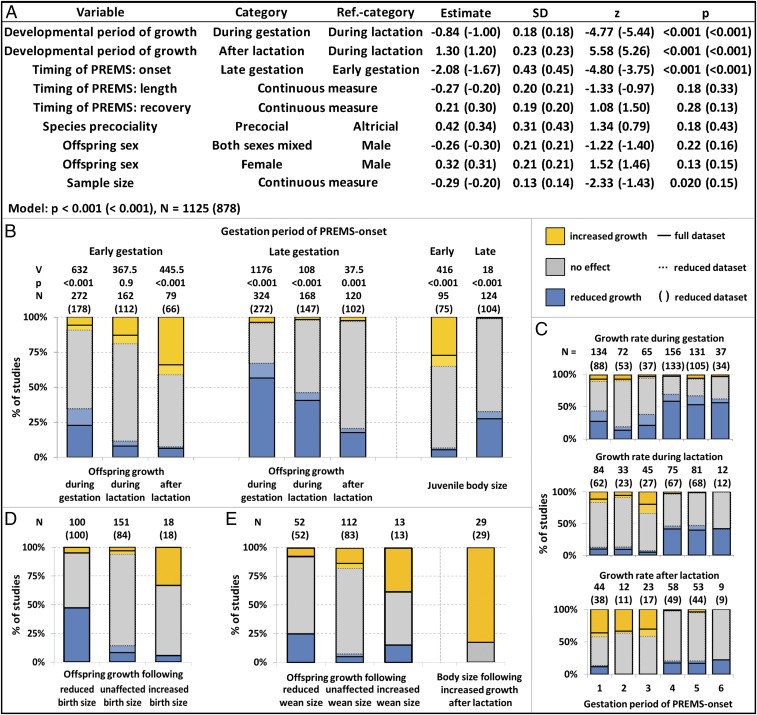Fig. 2.
Effects of early vs. late gestation maternal stress on offspring growth rates during gestation, during lactation and after lactation across mammals. Early/late gestation means first/second half of gestation. Percentage of studies reporting a higher (orange), equal (gray), or lower (blue) growth rate in offspring from PREMS mothers compared with control mothers (relative growth rate). (A–C) For each developmental period, relative growth rates following PREMS during the first half of gestation were higher than those following PREMS during the second half of gestation. Within this pattern, the relative growth rate increased with increasing levels of offspring independence (developmental period). (A) In a cumulative Logit link mixed model (CLMM) (random factors: species, within study repeated measures), relative growth rates were independently predicted by developmental period of growth measurement and gestation period of PREMS onset. Length/recovery means period between onset and end of PREMS/between end of PREMS and parturition (both in percent of gestation period). (B) PREMS effects on offspring growth following PREMS during the first half of gestation largely conformed to predictions if both developmental constraints and an adaptive growth plasticity coincide, whereas PREMS effects following PREMS during the second half of gestation largely conformed to predictions of mere developmental constraints in the absence of an adaptive growth plasticity. (C) Presenting PREMS effects on offspring growth depending on finer-scaled periods of PREMS onset (half gestational trimester) illustrates the difference between early and late gestation PREMS onset. (D and E) PREMS effects on offspring growth were not due to catch-up growth in reaction to a preceding growth reduction because accelerated offspring growth was preceded by increased rather than decreased body size at both birth and weaning, and accelerated postindependence growth led to increased rather than unaffected juvenile body sizes.

